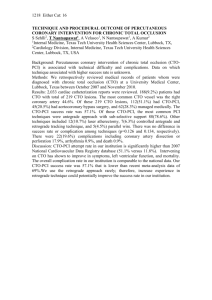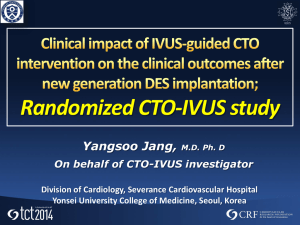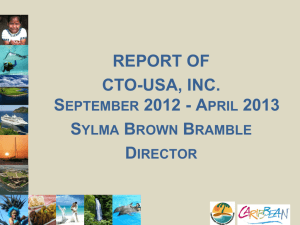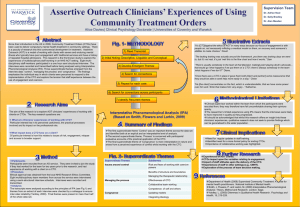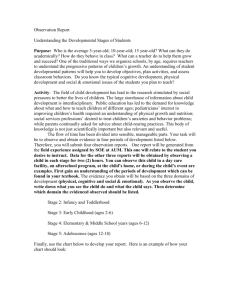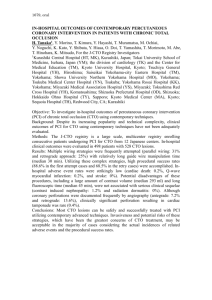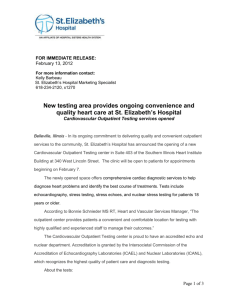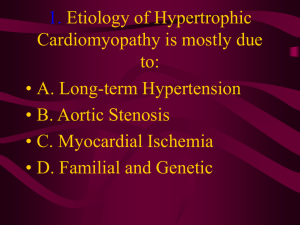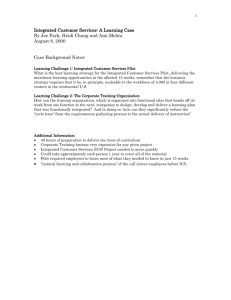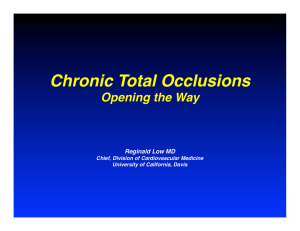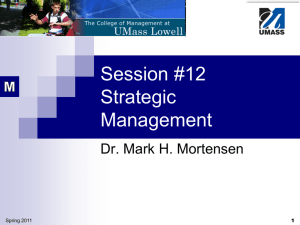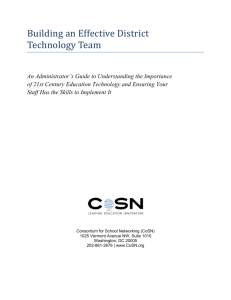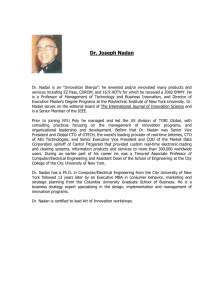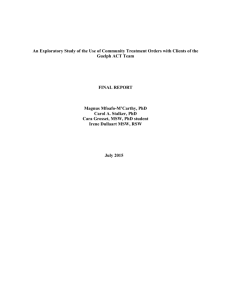does vascular patency of chronic total occlusion
advertisement
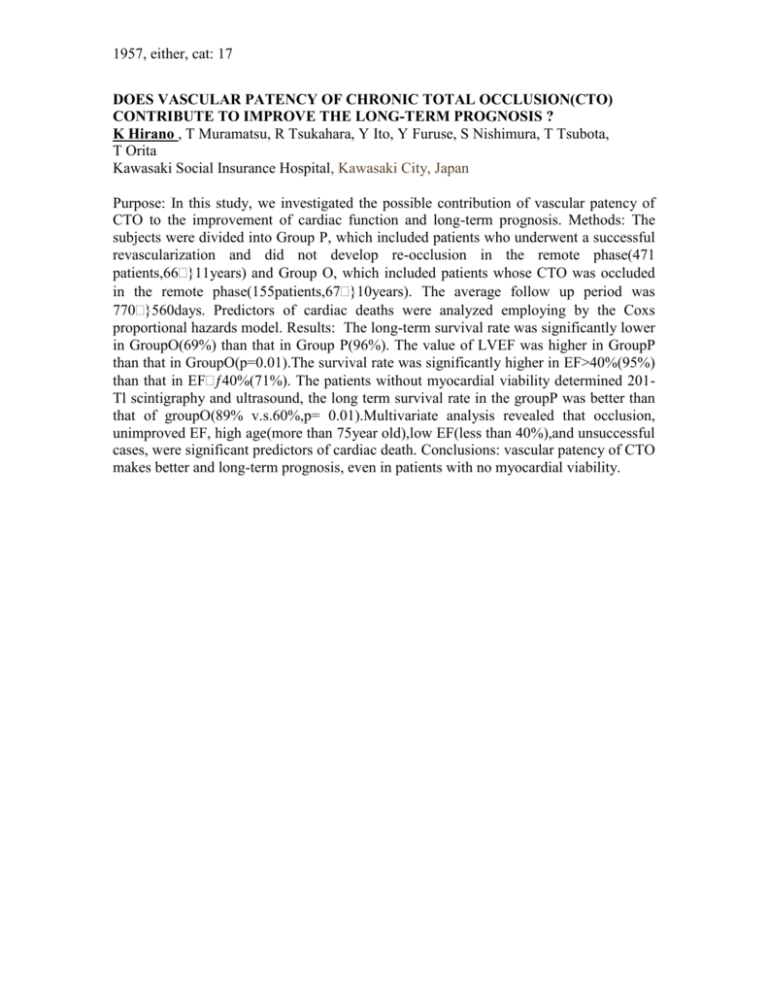
1957, either, cat: 17 DOES VASCULAR PATENCY OF CHRONIC TOTAL OCCLUSION(CTO) CONTRIBUTE TO IMPROVE THE LONG-TERM PROGNOSIS ? K Hirano , T Muramatsu, R Tsukahara, Y Ito, Y Furuse, S Nishimura, T Tsubota, T Orita Kawasaki Social Insurance Hospital, Kawasaki City, Japan Purpose: In this study, we investigated the possible contribution of vascular patency of CTO to the improvement of cardiac function and long-term prognosis. Methods: The subjects were divided into Group P, which included patients who underwent a successful revascularization and did not develop re-occlusion in the remote phase(471 patients,66•}11years) and Group O, which included patients whose CTO was occluded in the remote phase(155patients,67•}10years). The average follow up period was 770•}560days. Predictors of cardiac deaths were analyzed employing by the Coxs proportional hazards model. Results: The long-term survival rate was significantly lower in GroupO(69%) than that in Group P(96%). The value of LVEF was higher in GroupP than that in GroupO(p=0.01).The survival rate was significantly higher in EF>40%(95%) than that in EF•ƒ40%(71%). The patients without myocardial viability determined 201Tl scintigraphy and ultrasound, the long term survival rate in the groupP was better than that of groupO(89% v.s.60%,p= 0.01).Multivariate analysis revealed that occlusion, unimproved EF, high age(more than 75year old),low EF(less than 40%),and unsuccessful cases, were significant predictors of cardiac death. Conclusions: vascular patency of CTO makes better and long-term prognosis, even in patients with no myocardial viability.
